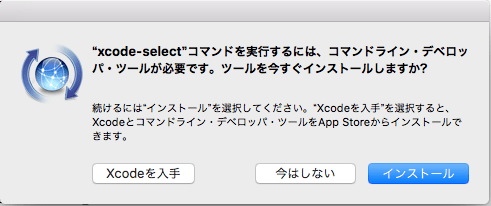Sometimes you want to install software that is typically categorized as F/OSS(Free, or Open Source Software).
Homebrew-xcode Homebrew tap with formulas and casks for installing Xcode, legacy SDKs, and other developer tools. Homebrew is a package manager designed for installing UNIX tools and other open-source applications on Mac OS X. It will quickly download and install them, compiling them from source. Homebrew Cask extends Homebrew with support for installing binary apps — the kind you normally drag to your Applications folder from DMG files. This took me one day to fix, because usually everyone tells you to run xcode-select -install. This does not fix the problem. Why this happens. Mac OS X 10.14 has stopped placing the include libraries in their usual location, /usr/include, keeping them only inside the XCode directory. To confirm that this is the problem, simply run ls /usr. # Install Command-line tools as dependency for Homebrew xcode-select -install # Sets the development directory path to /Library/Developer/CommandLineTools # Install Homebrew /bin/bash -c '$(curl -fsSL # Install Mas (command-line interface for Mac App Store) brew install mas # Search for Xcode showing only the first 5 results mas search xcode head -5 # Install Xcode using App ID mas install 497799835 # The appid for Xcode. As I understand, Xcode command line tools can be installed without installing Xcode. Also, from my previous experience, if the command line tools aren't installed separately from Xcode (by running xcode-select -install), they are not detected by Homebrew, i.e. When running brew config, the.
Homebrew is a packaging system for OS X whichmakes installing (and keeping them updated) many of these bits of software easy.

Install Xcode
To start with, we need to install the Xcode tools. Its not necessary toinstall all of Xcode to do this. We can simply run:
Install homebrew
Now that we have Xcode tools installed, we can install homebrew. Start bylooking at the web page: http://brew.sh
Homebrew Xcode 2
When you’re ready, open up Terminal.app and paste in the following (thisassumes you are using a bourne shell derivitive. If not, you will needto modifiy as appropriate):
Homebrew installs a bunch of files into ‘/usr/local’ and its intended to berun as a regular user (with the implication that ‘/usr/local’ needs to beowned and writable by said regular user.
Brew update
The first thing you should know how to do is update the brew repository.
This will reach out to github and pull down the current version of thehomebrew repository, containing all the recipies for packages you may want touse.
Brew install example
Now that you have homebrew installed, you can use it to install software. Forexample, I like to install the ‘mtr’ package instead of using the traditionaltraceroute. The install process looks like this:
The output from running ‘sudo mtr -c 1 google.com’ might look like:
If you don’t want to have to call mtr with sudo, you can do the following:
You will probably have to substitute a newer version for the ‘0.86’. After yourun these commands, you should be able to execute mtr with out using sudo.
Brew search
Now, you can go use brew to install other software. Search the list ofavailable packages with
If you don’t specify a name or an expression ‘/expression/’, it will dump allthat is available.
Once you’ve selected the package you wish to install, you can
Brew upgrade (all)
Homebrew Xcode
Lastly, you should know how to upgrade packages you’ve installed. Presumingyou’ve already run a ‘brew update’ (discussed above), you should run
Homebrew Xcode
This will look through all of the packages you have installed, compare it tothe current list (this information was fetched when you ran ‘brew update’),and then it will upgrade any packages that are out of date.
